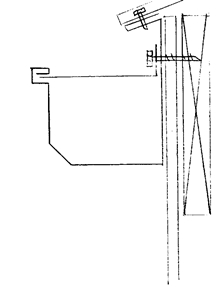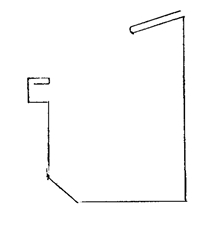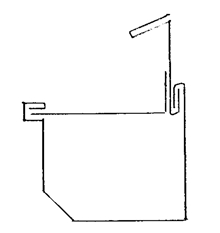 By Harry Schouten, ADVANCED Architectural Sheet Metal & Supply
By Harry Schouten, ADVANCED Architectural Sheet Metal & Supply
In the past years, I have seen an increase in people and companies wanting new gutters and downspouts on old metal buildings. The question that always comes first is: How do we remove the old and install the new without the hassle?
By hassle they mean backing out the screws on the hangers and through the roof flange, which we all know strips the heads or shears off. Now you are grinding or sawing them off, which is time consuming not the least to say aggravating. I have found a way to solve this problem. It saves time and aggravation. It is cost efficient and easy to install.
First, check inside the building where the wall meets the roof. There will be either a 2x if it is a pole building or a steel channel. Make sure these are in good condition, seeing as this is what will be supporting the gutter. This works with K-Style or Box type gutters.
Second, I have found by cutting the back of the gutter off (anywhere from 2-inches to 4-inches down from the roof) works very well. If the hangers are attached to the roof, simply cut them off at the edge of the roof leaving the screws attached on the roof as not to damage it. This system will work for pole buildings as well as steel buildings.
 |
Detail 2 |
Third, measure the roof overhang. It will vary from 1-inch to 4-inches in most cases. (See Detail 2)
If it is too big, you can cut it down. You will also need to know the roof pitch.
Fourth, measure the web depth on the wall panels. This will let you know the length of the wood screw or self tapping metal screws you will need. They have metal self tappers that will cut through ¼-inch to 3/8-inch steel that work very well (See Detail 2).
 |
Detail 1 |
When you make the roof flange, you just hem it over onto itsself and brake it back out towards the gutter—not back onto the roof. It is important to allow enough room for a drill to fit between the roof and the front edge of the gutter as to anchor the hanger into the structure. (See Detail 1)
 |
Detail 4 |
When you go to hang the gutter, you hold it up to the roof and temporarily screw thru the roof in a low web and into the hem on the gutter. This allows the men in the field to install 10-foot to 40-foot sections and not hold the weight. If the screw leaks, it leaks into the gutter (See Detail 2). Next, put your hanger in. Hangers should hook into the gutter’s front hem/lip and have a ¼ inch hole in the back 1-inch leg. Hangers at 2 foot on center are recommended. If you are worried about the front of the hanger not being strong enough, you can always rivet (5/32-3/16), screw or bolt into the top flange on the gutter lip and hanger. Screw the back of the hanger into the structure. (See Detail 4)
Some people ask about water or ice backing up at the roof and gutter flange. Remember, you did not disturb the original gutter roof flange or the seal. You can tell the owner you will inspect the rubber/foam seal and replace it if needed.
 |
Detail 3 |
If you have a gutter machine with an Alcoa hook on the backside, this system works extremely well. You can make longer continuous lengths and install the roof flange to the hook and install hangers before installing the gutter. (See Detail 3)
This system has been found to work very well; however, there are probably pros and cons.
I always believed that putting ideas out there and discussing them is the best way to make a better product or make your job easier. Please send your comments or questions to me, Harry Schouten - harry@advarchsm.com - so we can have your input on this type of gutter system. Also let me know if you would like other articles on downspouts, gutters, copings, accessories or any other questions you would like to discuss.